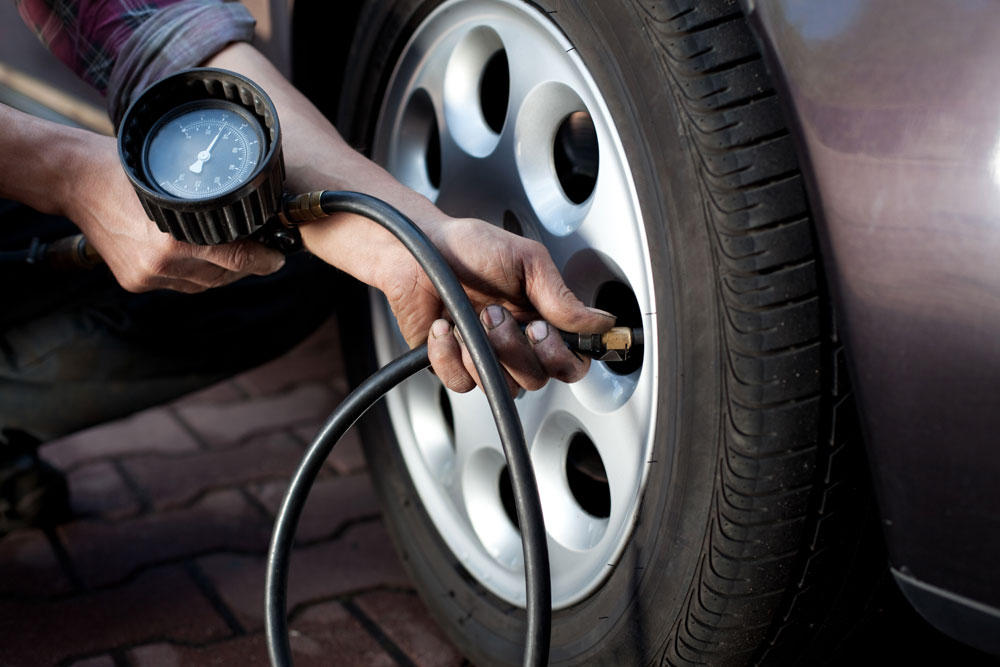Maintaining optimal tire pressure is a simple yet effective way to enhance your vehicle’s fuel efficiency and ensure your safety while driving. Especially in a city like San Diego, where diverse terrains and varying climate conditions can affect your vehicle’s performance, regularly checking your tire pressure is essential. Let’s dive into how properly inflated tires contribute to fuel efficiency and safety, and how you can check your tire pressure like a pro.
The Importance of Correct Tire Pressure
Fuel Efficiency: Properly inflated tires reduce rolling resistance, which means your car doesn’t have to work as hard (or use as much fuel) to move forward. According to the U.S. Department of Energy, keeping your tires inflated to the proper pressure can improve your gas mileage by up to 3%. In the context of San Diego’s gas prices, this can lead to significant savings over time.
Safety Concerns: Over- or under-inflated tires can adversely affect your vehicle’s handling, making it more challenging to control in emergency situations. Proper tire pressure ensures that the contact between the tire and the road is optimized, allowing for better grip and shorter braking distances.
How to Check Your Tire Pressure
- Find the Recommended Pressure: Check your vehicle’s owner’s manual or the sticker on the driver’s side door jamb to find the recommended tire pressure. This figure is usually given in pounds per square inch (PSI).
- Use a Quality Tire Pressure Gauge: While many gas stations have air pumps with built-in gauges, investing in a quality tire pressure gauge can provide more accurate readings. Digital, dial, and pen-type gauges are all effective, so choose one that you find easy to use.
- Check Tires When Cold: Tire pressure can fluctuate with temperature changes throughout the day. For the most accurate reading, check your tires in the morning or after the car has been parked for at least three hours.
- Remove the Cap from the Valve Stem: The valve stem is a small protrusion from your tire that houses the valve cap. Remove the cap and press the tire gauge firmly onto the valve stem. If you hear a hissing sound, adjust the gauge until the hissing stops and you get a stable reading.
- Adjust Tire Pressure if Necessary: If the reading is above the recommended PSI, let some air out until it reaches the correct level. If it’s too low, fill the tire with air and check the pressure again.
- Replace the Valve Cap: Once you’ve adjusted your tires to the correct pressure, don’t forget to replace the valve caps to protect the valve from dust and debris.
Tips for Maintaining Optimal Tire Pressure
Check Regularly: Make it a habit to check your tire pressure at least once a month and before long trips.
Monitor Tire Condition: While checking the pressure, inspect your tires for any signs of wear or damage that could affect their performance.
Consider Seasonal Changes: Be aware that changing seasons can affect tire pressure. Cooler temperatures in winter can cause PSI to drop, while warmer summer temperatures can increase it.
Proper tire maintenance is key to ensuring your vehicle’s fuel efficiency and safety, especially in San Diego’s dynamic environment. By regularly checking and adjusting your tire pressure, you can enjoy smoother rides, lower fuel costs, and peace of mind knowing that your vehicle is in top condition. For any tire service needs or further advice on vehicle maintenance, don’t hesitate to visit our auto repair shop in San Diego, where our experts are ready to assist you.


0 Comments